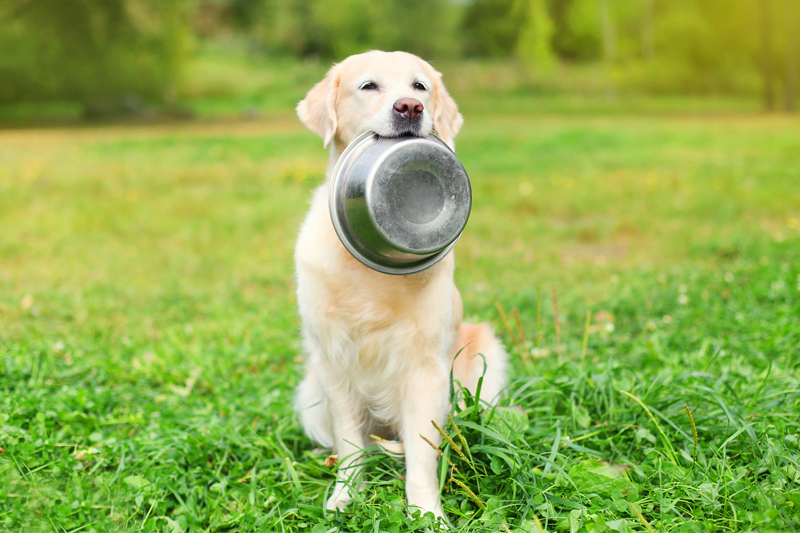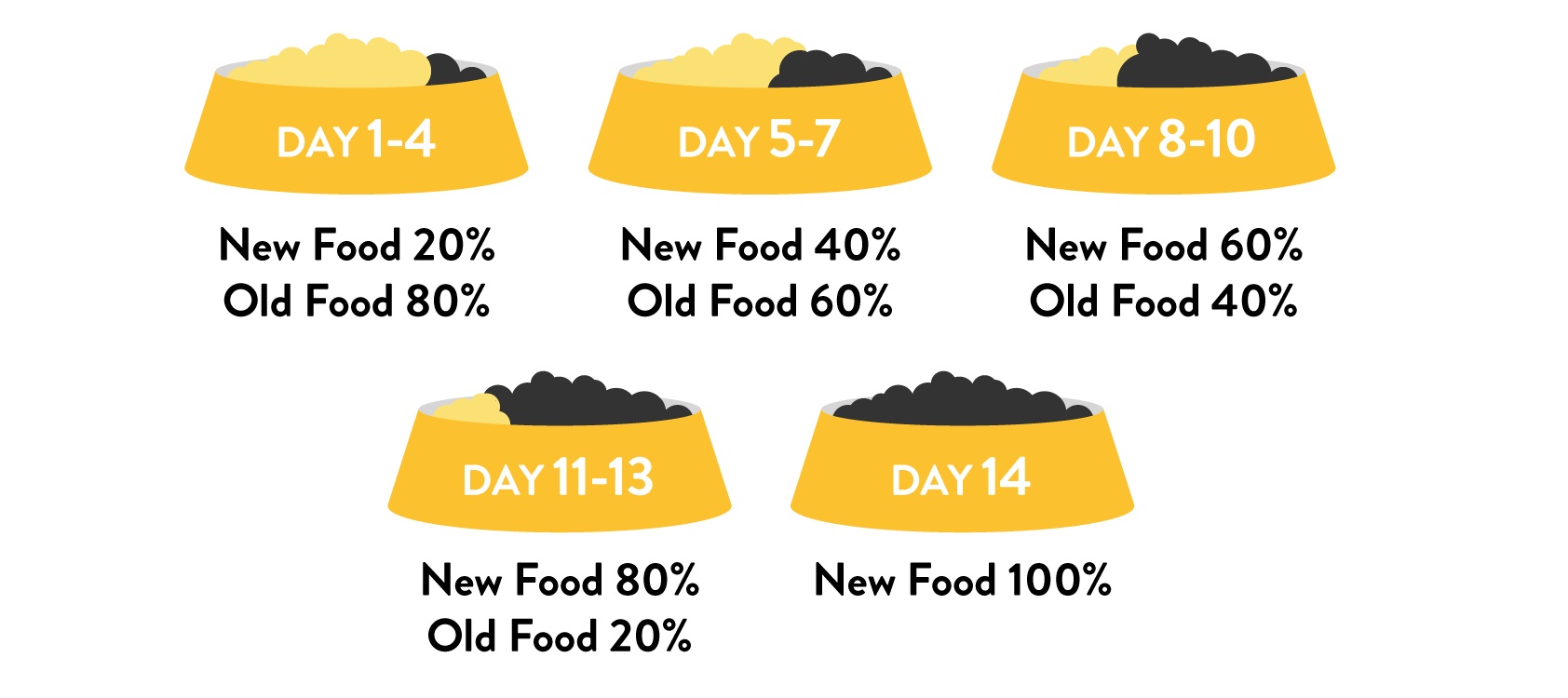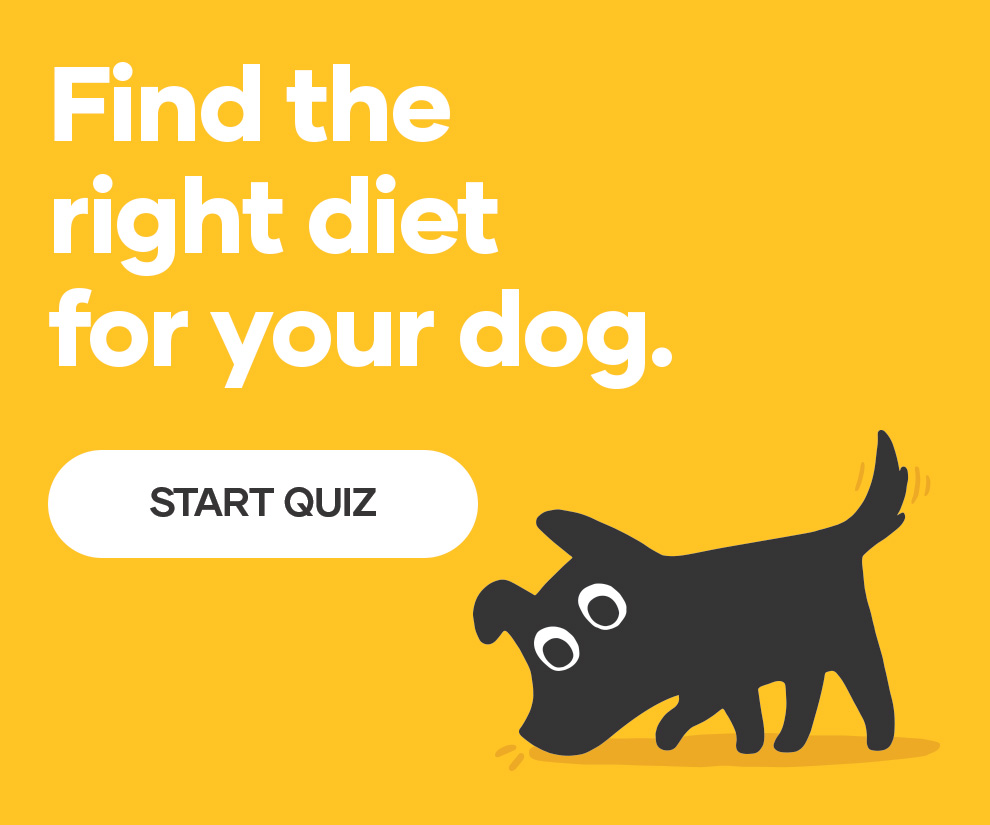Changing your dog’s diet is not something you can do overnight. The shift to a new food should be made slowly to avoid stomach upsets. Here’s our guide of how to transition your dog to a new food in a smooth and comfortable way for them.
If you’ve decided to make a change to your dog’s diet, whether it’s a different brand, a new balance between wet and dry food, or even shifting from puppy food to adult pet food, it’s really important that you do so slowly. While we can happily eat a variety of foods in one day, our pets have very different digestive systems, which need a focus on balance. Some dogs are likely to have a more sensitive stomach than others but, even so, an abrupt change in diet can lead to digestive upsets. Gradually introducing the food over a 14-day period is the best way to avoid some of the issues that can occur with a change to diet.
We recommend the following approach to transition your dog to a new food:
Days 1-4
20% new food and 80% old food
Days 5-7
40% new food and 60% old food
Days 8-10
60% new food and 40% old food
Day 11-13
80% new food and 20% old food
Day 14
100% new food
Throughout the 14-day period, you should keep a close eye on your dog’s digestive health. If you notice any minor upsets, including diarrhoea or vomiting, you should stop the transition until this has settled. Contact your local Greencross Vets if you continue to see these symptoms.
You also need to make sure that you are not overfeeding your dog during the transition process. Ensure that you are paying close attention to the recommended quantities for your pet’s weight and size, as feeding too much can also lead to your pet gaining weight.
What to do if your dog doesn’t like the new food
If you follow the 14-day transition process, it’s most likely that your pet will quickly adapt to their new diet. But if you notice your pet avoiding their food, it may be more to do with what they are eating outside of their bowl. If your pet is receiving too many treats, they may start to avoid their main meals. It’s important that you avoid overfeeding them to ensure that they look forward to their daily meals to satisfy their hunger and keep them healthy.
If you’re searching for a superior diet that you can transition your dog to, use our Food Finder tool to discover the best foods for your unique dog. Don’t hesitate to visit your local Petbarn store to chat to a team member for advice on choosing the right food for your dog, or any other feeding queries you may have.






